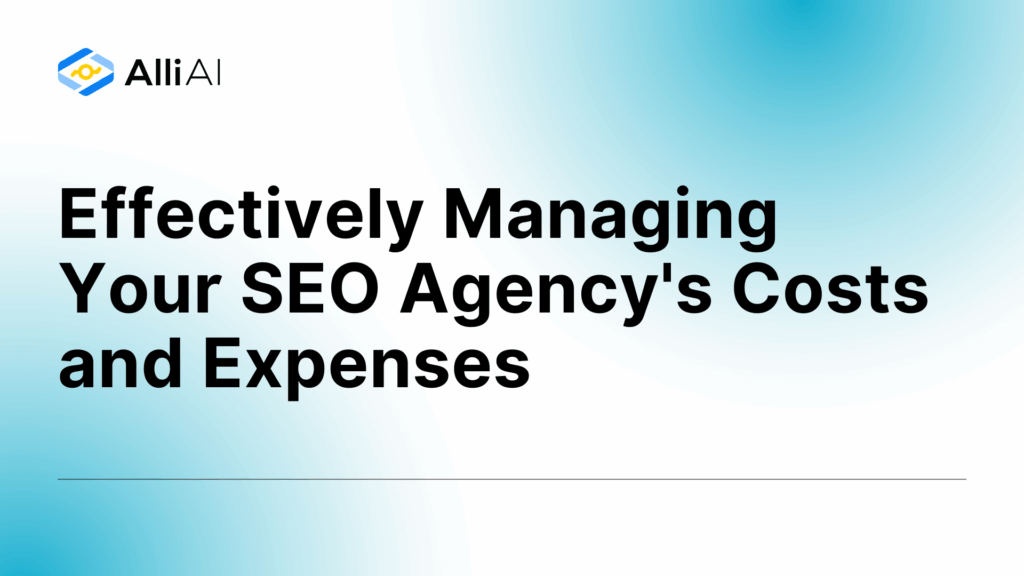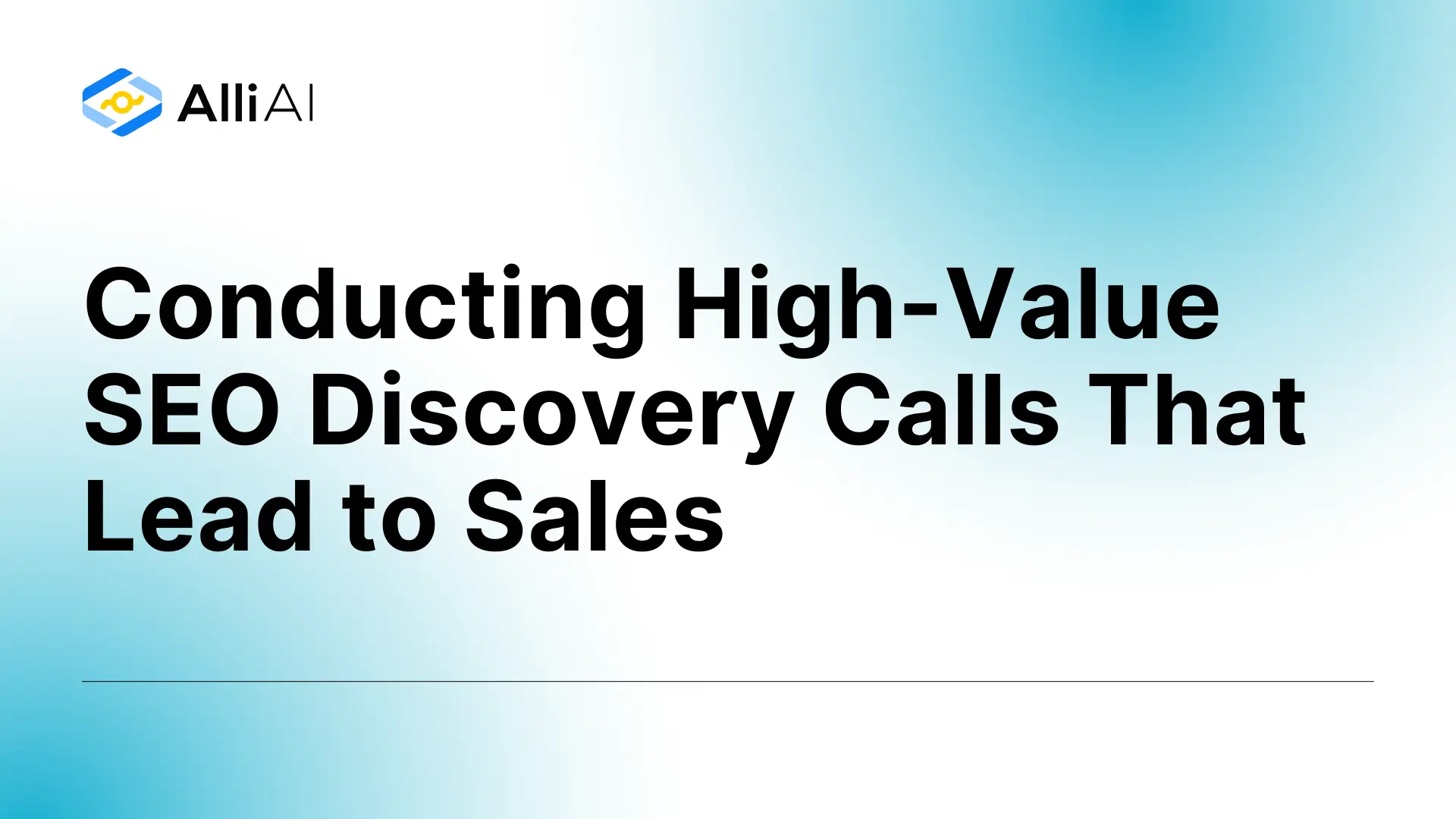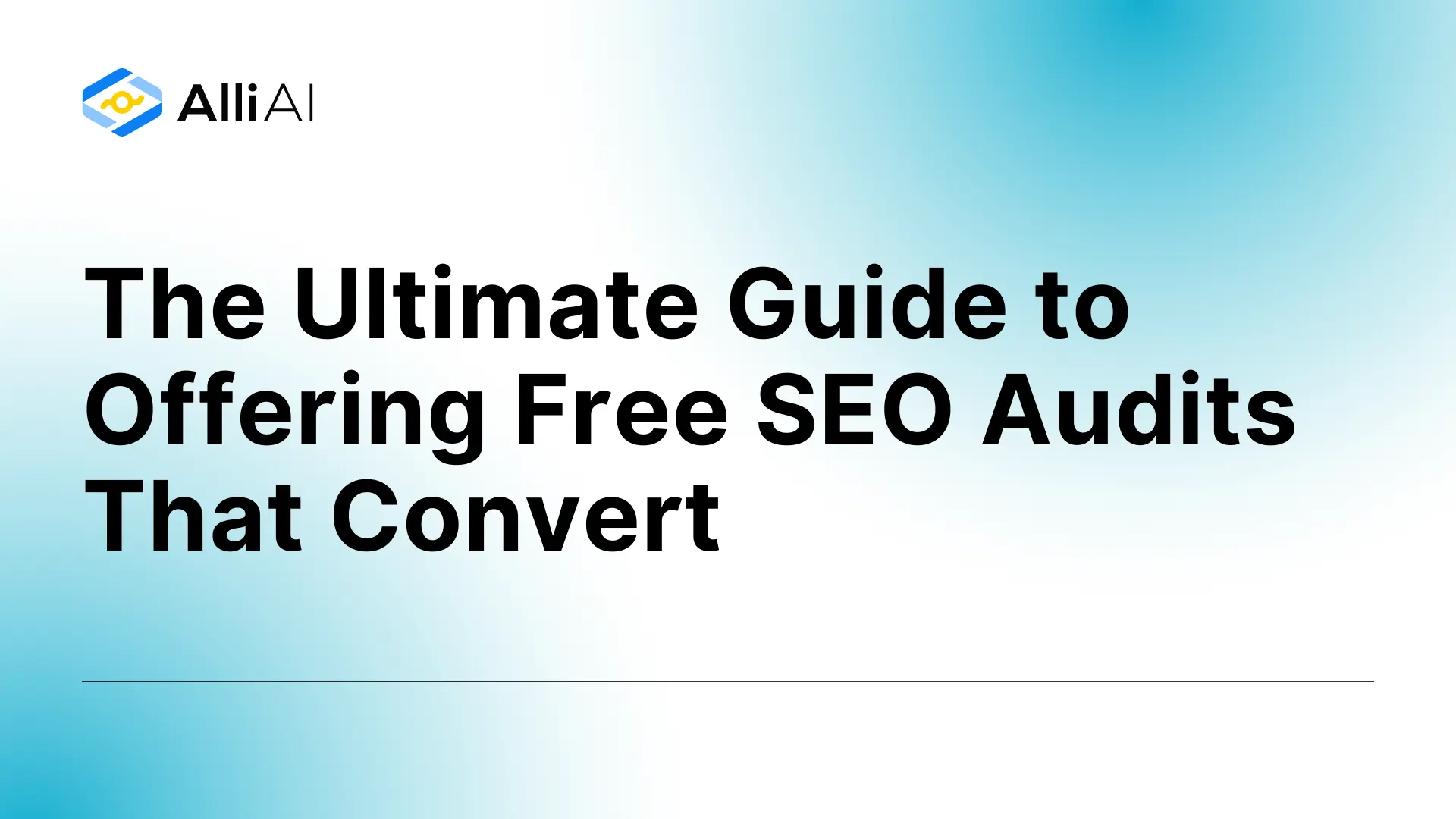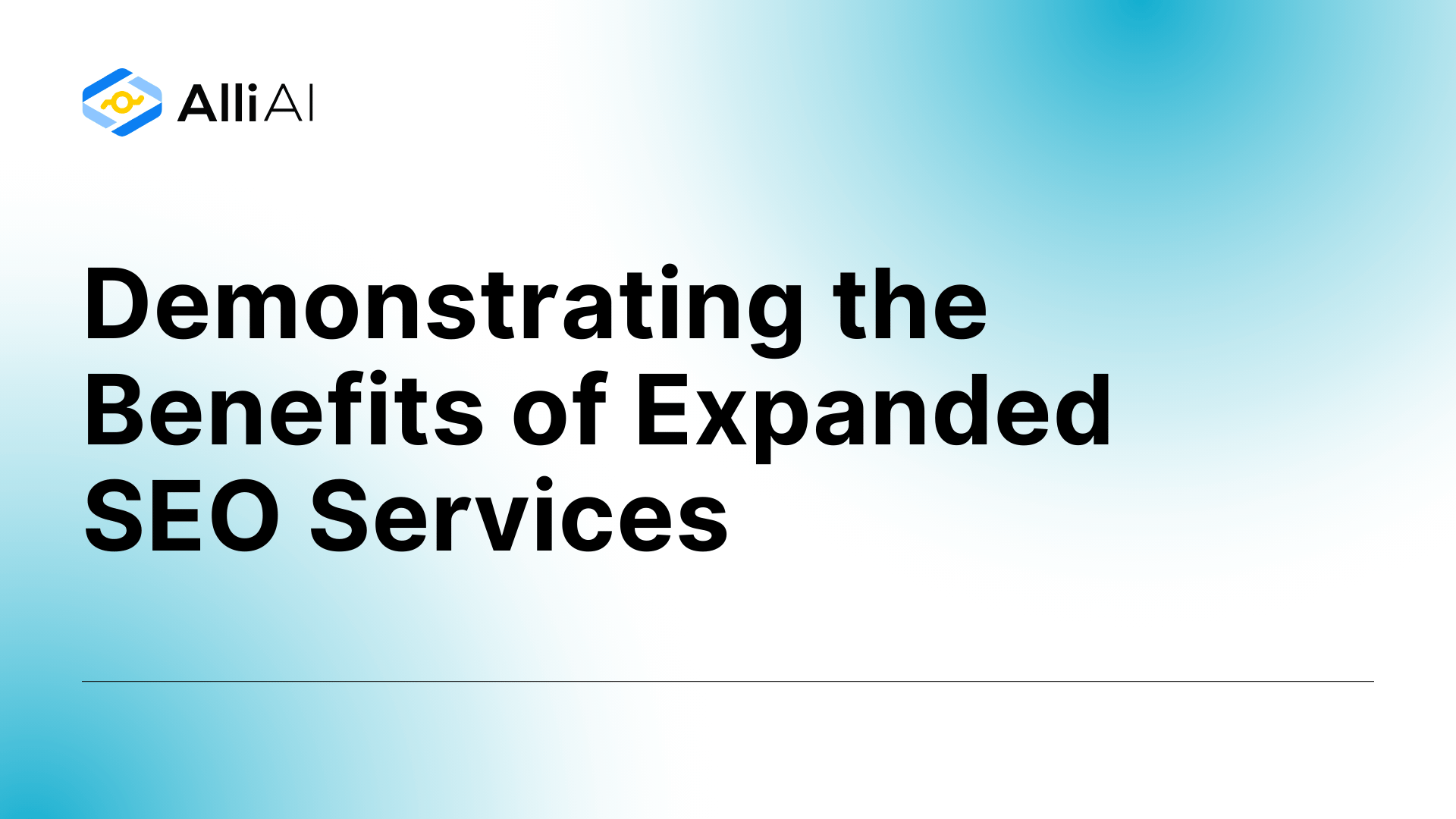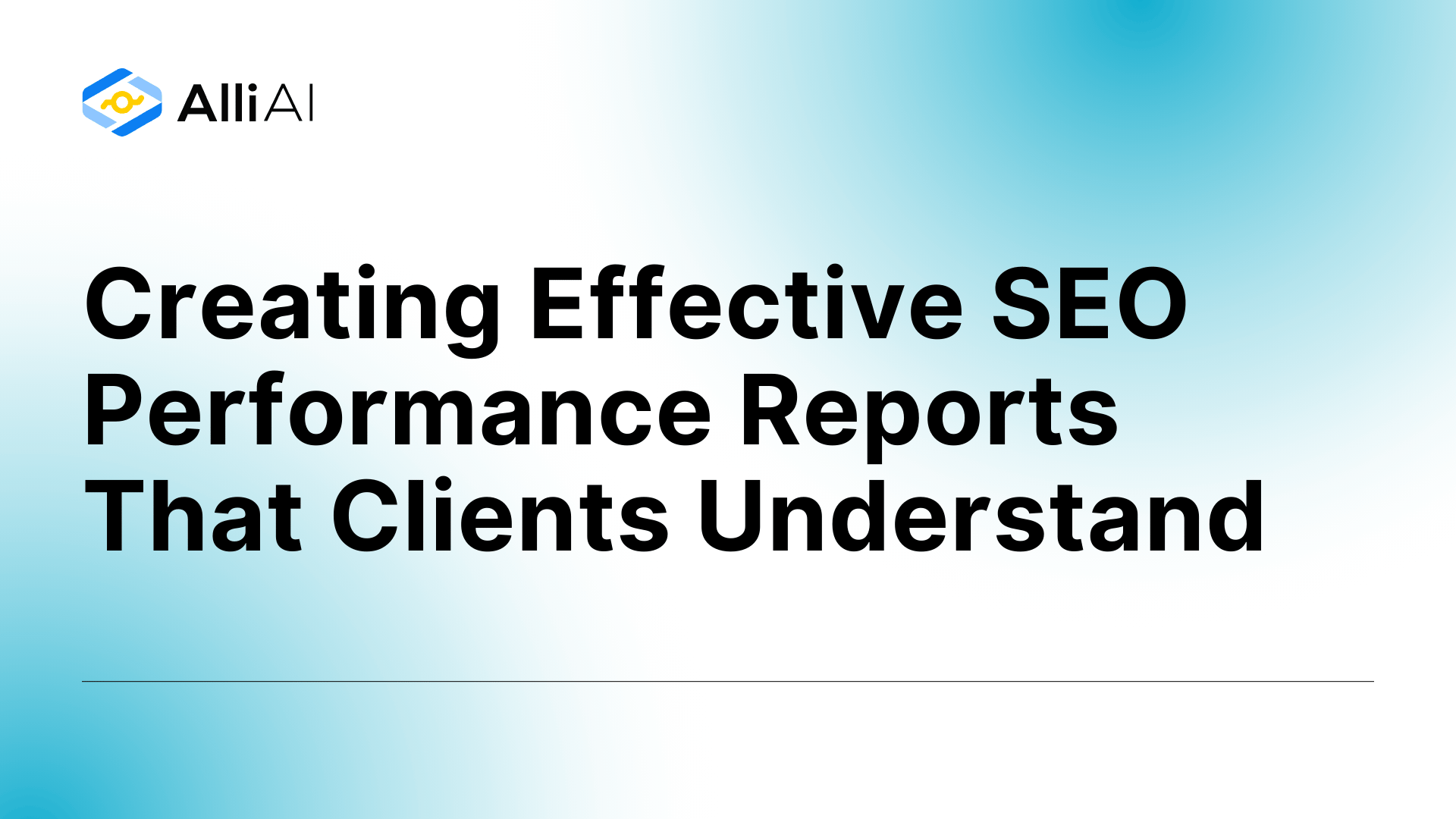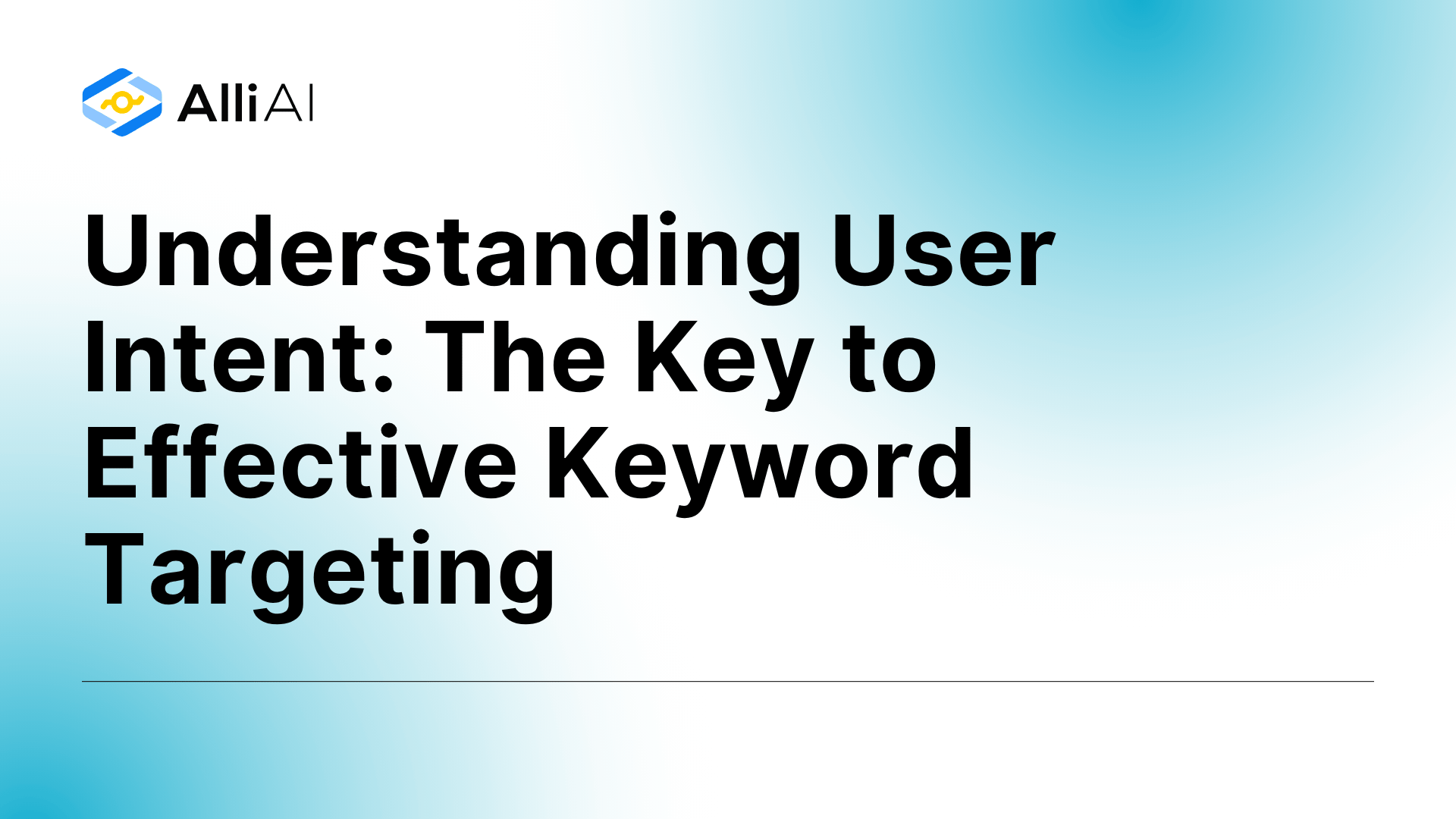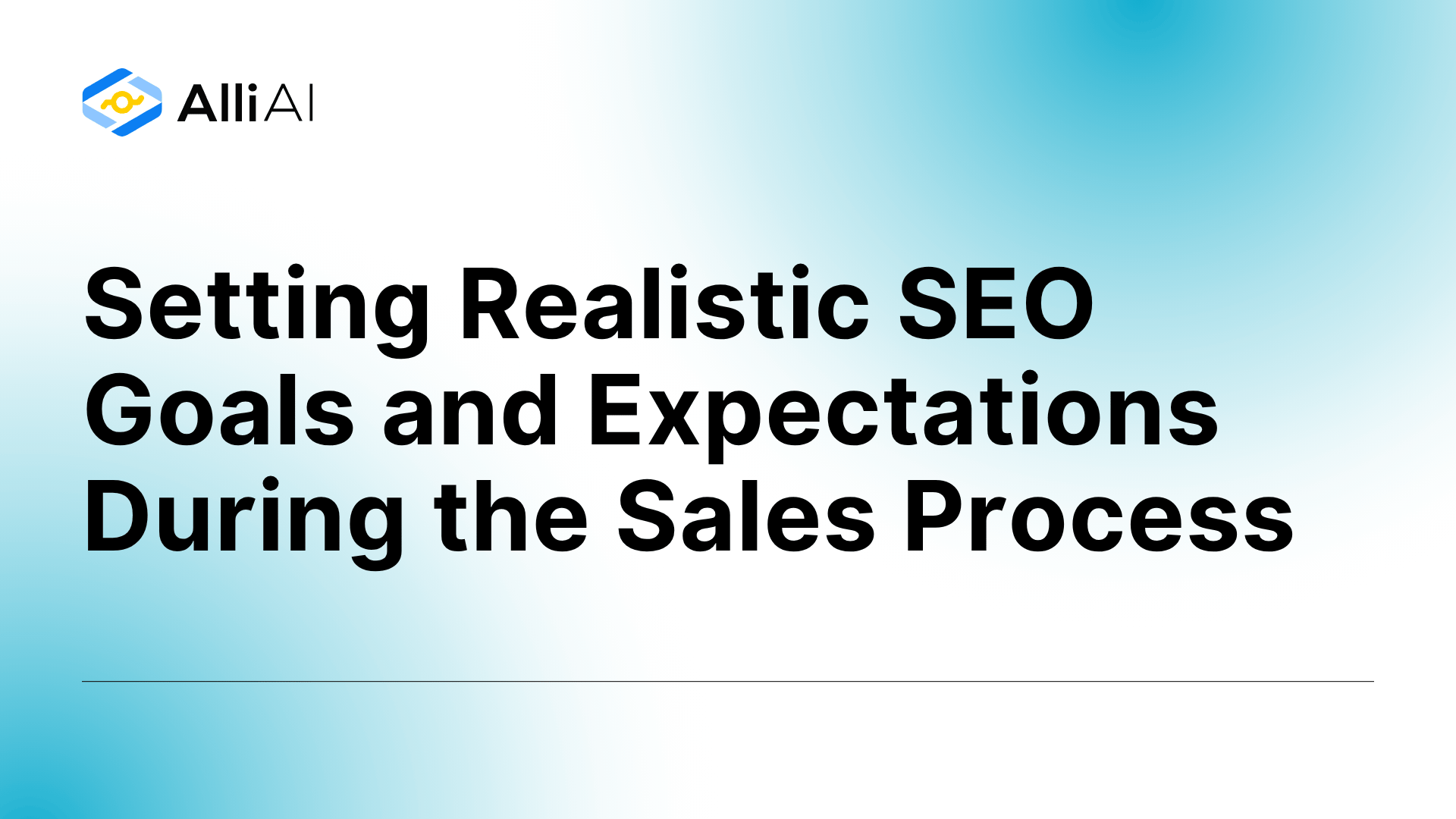Running a profitable SEO agency isn’t just about delivering great results for clients—it’s about mastering the financial fundamentals that separate thriving agencies from those struggling to stay afloat. If you’re managing an agency and find yourself wondering where your profits are going despite steady client growth, you’re facing one of the most common challenges in our industry.
The truth is, many talented SEO professionals excel at driving organic traffic and rankings but struggle with the business side of agency operations. Poor cost management can quickly erode your margins, limit your growth potential, and leave you working harder while earning less.
I’ll show you exactly how to take control of your agency’s finances using proven strategies that successful agencies use to maintain healthy profit margins while scaling their operations. These aren’t theoretical concepts—they’re practical, actionable methods that can transform your agency’s financial performance starting today.
Step 1: Analyze Your Complete Cost Structure
Before you can optimize your expenses, you need a crystal-clear picture of where every dollar goes. Most agency owners have a general sense of their costs but lack the granular understanding needed for effective financial management.
Break down your expenses into four critical categories:
Personnel Costs represent your largest expense category, typically accounting for 50-70% of total costs. This includes salaries, benefits, payroll taxes, and freelancer fees. For a mid-sized agency, annual salaries per employee range from $40,000 to $80,000, with benefits adding another 20-30%. Don’t forget to include the hidden costs of recruitment, onboarding, and training—these can add $10,000-$15,000 per new hire when you factor in time and resources.
Software and Tools create your second major cost center. Essential SEO tools like Ahrefs, SEMrush, and reporting platforms can cost $150-$600 monthly for basic packages, scaling to $1,000+ for enterprise solutions. The key insight here: most agencies pay for overlapping functionality across multiple tools without realizing it. Learn more about AI SEO Automation Software and AI Schema Markup Generator.
Operational Overheads include rent, utilities, insurance, and administrative expenses. Office space in urban markets can cost $3,000-$10,000 monthly, with utilities adding $300-$800. However, the shift toward remote work presents significant savings opportunities that many agencies haven’t fully explored.
Client Acquisition and Marketing encompasses all costs related to attracting new business—from sales team salaries to advertising spend. Track your Client Acquisition Cost (CAC) meticulously, as this directly impacts your profitability equation.
Pro tip: Create a monthly expense audit template and review it religiously. You’ll be surprised how many subscriptions and services you’re paying for but not using effectively.
| Cost Category | Typical Allocation Range (%) | Notes |
| Personnel Costs (In-house & Freelance) | 40 – 60% | Includes salaries, benefits, payroll taxes, contractor fees. Often the largest expense. |
| Software & Tools | 5 – 15% | SEO platforms, analytics, reporting, project management tools. |
| Marketing & Sales (Client Acquisition) | 5 – 15% | Advertising, content, sales commissions, networking. |
| Rent & Utilities (Office Space) | 5 – 15% | Can be significantly lower with remote/hybrid models. |
| Other Administrative/Overhead | 5 – 10% | Insurance, legal, accounting, training, office supplies. |
Note: These percentages are illustrative and can vary based on agency size, location, service model, and operational efficiency.
Step 2: Implement Strategic Pricing That Reflects True Value
Your pricing strategy directly determines your agency’s financial health. Too many agencies compete on price rather than value, creating a race to the bottom that destroys profitability across the industry.
Start with cost-plus pricing as your foundation. Calculate your true hourly cost by dividing total monthly expenses by total billable hours. If your monthly costs are $50,000 and you have 800 billable hours, your baseline cost is $62.50 per hour. Any pricing below this threshold means you’re operating at a loss.
Transition to value-based pricing wherever possible. Instead of charging for your time, charge for the business impact you deliver. If your SEO work generates $100,000 in additional revenue for a client, a $10,000 monthly retainer becomes an easy decision for them—and a profitable one for you.
Structure your pricing models strategically:
Monthly retainers provide predictable revenue and should form the backbone of your pricing structure. Aim for 70% of your revenue from retainer clients, with project work filling the remaining 30%. Retainer fees typically range from $1,500-$5,000 for small businesses up to $15,000-$30,000 for enterprise clients.
Project-based pricing works well for defined deliverables like site audits or migrations. Structure these with milestone payments (30% upfront, 30% at midpoint, 40% completion) to maintain positive cash flow throughout the project.
Remember: Extremely low pricing (under $500 monthly retainers) signals an unsustainable business model. You can’t deliver quality results while covering your costs at these price points.
| Pricing Model | Pros for Agency | Cons for Agency | Impact on Cash Flow | Typical Profitability Potential | Key Cost Management Considerations |
| Monthly Retainer | Predictable revenue stream; Fosters long-term client relationships. | Requires constant value demonstration; Potential for scope creep if not well-defined. | Stable, predictable. | High (with efficiency & retention). | Efficient resource allocation; Clear SoW to prevent scope creep; Focus on client retention to maximize CLTV. |
| Project-Based | Predictable revenue per project; Rewards efficiency if scoped accurately. | Risk of underpricing or scope creep; Less flexible for ongoing needs; Can lead to “feast or famine” revenue cycles. | Lumpy, less predictable than retainers. | High (if scoped well). | Meticulous project scoping and SoW critical; Accurate time and cost estimation; Strict change control process. |
| Hourly Billing | Simple to implement; Transparent for hours worked; Flexible for scope changes. | Penalizes agency efficiency; Capped earnings potential; Can lead to unpredictable client costs. | Variable, dependent on hours billed. | Moderate. | Accurate time tracking; Justifying hourly rates; Managing client expectations on total hours. |
| Value-Based | Highest profit potential; Positions agency as strategic partner; Encourages innovation. | Difficult to quantify value and sell; Time-consuming discovery phase; Scaling challenges; Risk if results don’t meet projections. | Potentially high, but can be variable. | Very High. | Sophisticated ROI tracking and reporting; Strong sales skills to communicate value; Deep understanding of client’s business and financial metrics. |
| Performance-Based | Potentially lucrative if KPIs are met; Low perceived risk for client. | High risk for agency; Difficult to define fair KPIs; May incentivize short-term/risky tactics; Narrow focus. | Highly variable and risky; Payment delayed. | Variable (Zero to Very High). | Clearly defined, achievable, and measurable KPIs; Contractual protection for factors outside agency control; Managing client expectations on timelines and results. |
Step 3: Optimize Your Team Structure for Maximum Efficiency
Your team structure directly impacts both service quality and cost efficiency. The goal is creating the right blend of in-house expertise and external support to maximize value delivery while controlling costs.
Build your core team strategically. Maintain full-time employees for client-facing roles, strategic planning, and quality assurance. These positions require deep agency knowledge and consistent client relationships. Account managers, senior SEO strategists, and project managers should typically be in-house.
Leverage freelancers and contractors for specialized or variable work. Content creation, technical audits, and link building often work well with freelance specialists. You can access high-quality expertise without the fixed costs of full-time salaries and benefits.
Consider the economics carefully. A full-time SEO specialist might cost $40,000-$80,000 annually plus benefits, while freelance specialists charge $20-$150 hourly. For agencies handling 10-15 clients, a hybrid model often provides the best cost-efficiency.
Implement clear processes for managing external team members. Use project management tools, establish communication protocols, and create detailed briefs to ensure quality consistency. Poor management of freelancers can create more problems than solutions. Consider using an AI SEO Agent to help manage some tasks.
Track utilization rates religiously. Your goal should be 85-90% utilization for billable team members. Lower rates indicate you’re paying for unproductive time, while higher rates suggest potential burnout risks.
Step 4: Streamline Operations Through Smart Automation
Automation can reduce your operating expenses by up to 30% while improving service quality and consistency. The key is identifying repetitive tasks that don’t require human creativity or strategic thinking.
Automate your financial processes first. Implement automated invoicing systems that generate and send invoices on predetermined schedules. Set up automatic payment processing for retainer clients using ACH or credit card systems. Configure payment reminders to reduce collection times and improve cash flow. For more on pricing, see How to Develop a Profitable Pricing Strategy for Your SEO Agency.
Streamline client reporting with automation tools. Manual report creation consumes 5-10 hours monthly per client. Automated reporting platforms can reduce this to 1-2 hours while providing more comprehensive data. The time savings alone can improve your effective hourly rate significantly.
Deploy automation for routine SEO tasks. Rank tracking, basic site monitoring, and social media scheduling can all be automated. This frees your specialists to focus on strategy, analysis, and creative problem-solving—the high-value activities that justify premium pricing.
Set up workflow automation for project management. Use tools that automatically assign tasks, send status updates, and trigger next steps based on project milestones. This reduces administrative overhead and ensures nothing falls through the cracks.
Pro tip: Start with one process at a time. Master each automation before adding the next to avoid overwhelming your team with too many changes simultaneously.
Step 5: Negotiate Better Terms with Vendors and Service Providers
Vendor management represents one of the most overlooked opportunities for cost savings. Most agencies accept standard pricing without exploring negotiation opportunities that could save thousands annually.
Audit your software subscriptions quarterly. List every tool, its cost, utilization rate, and overlapping functionality with other tools. You’ll often discover you’re paying for similar capabilities across multiple platforms. Consolidate where possible and negotiate annual contracts for additional discounts. For insights on SEO costs, check out How Much Does SEO Cost in 2024?.
Approach vendors as partners, not just suppliers. Build relationships with key account managers at your essential tool providers. Long-term customers often receive preferential pricing, early access to new features, and more responsive support. These relationships can provide significant value beyond just cost savings.
Bundle services strategically. Many vendors offer package deals that provide better per-unit pricing. If you’re using multiple services from the same company, explore bundling opportunities that could reduce your total costs.
Time your renewals strategically. Negotiate near fiscal year-ends when vendors are trying to meet quotas. This timing often provides additional leverage for securing better terms.
Consider alternatives for non-critical functions. Premium tools are essential for core SEO functions, but supporting activities like basic site monitoring or simple reporting might work well with lower-cost alternatives.
Step 6: Master Cash Flow Management for Sustainable Growth
Cash flow management makes the difference between agencies that thrive through growth phases and those that struggle despite strong client demand. Your cash flow strategy must account for the unique challenges of service businesses with mixed retainer and project income.
Build a comprehensive cash flow forecasting model. Project your income and expenses 90 days forward, updating weekly as new information becomes available. Include retainer payments, project milestones, and seasonal variations in client spending. This forward visibility allows you to spot potential cash shortfalls before they become critical.
Optimize your payment terms strategically. Require retainer clients to pay via automatic methods (ACH or credit card) with payments due on the 1st of each month. Structure project payments in milestones rather than waiting for completion. A typical structure might be 30% upfront, 30% at midpoint, and 40% upon completion.
Maintain appropriate cash reserves. Keep 3-6 months of operating expenses in reserve to handle unexpected challenges or capitalize on growth opportunities. This buffer prevents you from making desperate decisions during temporary revenue dips.
Diversify your client portfolio to reduce risk. Avoid over-dependence on any single client or industry. If one client represents more than 20% of your revenue, you’re vulnerable to significant cash flow disruption if they leave unexpectedly.
Monitor your key cash flow metrics:
- Days Sales Outstanding (DSO): Average time to collect payments
- Cash conversion cycle: Time from service delivery to payment receipt
- Burn rate: Monthly cash consumption during slower periods
For more on budgeting, see How to Plan an SEO Budget to Maximize ROI.
Remember: Profitable on paper doesn’t mean cash-positive in practice. Many agencies fail despite having profitable client relationships because they can’t manage the timing of cash flows effectively.
Step 7: Track the Right KPIs to Ensure Long-Term Financial Health
Monitoring the right Key Performance Indicators allows you to spot problems early and make data-driven decisions about your agency’s financial direction.
Focus on these essential financial KPIs:
Net Profit Margin measures your bottom-line profitability after all expenses. Calculate this as (Total Revenue – Total Expenses) / Total Revenue. Healthy agencies typically maintain 15-25% net profit margins. Lower margins suggest pricing or cost management issues that need immediate attention.
Client Lifetime Value (CLTV) represents the total profit you’ll generate from each client relationship. Calculate average monthly profit per client multiplied by average client retention period. This metric helps you understand how much you can afford to spend on client acquisition while remaining profitable.
Customer Acquisition Cost (CAC) measures your total sales and marketing expenses divided by new clients acquired. Your CLTV should be at least 3x your CAC for a sustainable business model. If this ratio is lower, you’re spending too much to acquire clients or need to improve client retention. For more on agency costs, read What Are the 9 Operating Costs for a Digital Marketing Agency.
Team Utilization Rate tracks how effectively you’re converting labor costs into billable revenue. Calculate total billable hours divided by total available hours for your team. Target 85-90% utilization—higher rates risk burnout, while lower rates indicate inefficiency.
Track operational KPIs that predict financial performance:
Project Profitability helps you identify which types of work generate the best returns. Track profit margins by service type, client size, and project complexity to guide your service development and pricing strategies.
Client Retention Rate directly impacts profitability since retained clients cost significantly less than acquired ones. Monthly retention rates above 95% indicate healthy client relationships and service quality.
Proposal Win Rate reflects the effectiveness of your sales process and competitive positioning. Track this by service type and deal size to identify areas for improvement in your sales approach.
Pro tip: Create a monthly KPI dashboard that you review religiously. Trends matter more than individual monthly variations—look for patterns that indicate improving or declining financial health.
| KPI Name | Formula / Definition | Why It’s Important for SEO Agencies | Typical Benchmark / Target Range |
| Net Profit Margin | (Revenue – All Expenses) / Revenue | Overall profitability after all costs. | 15-25% (target >20%) |
| Gross Profit Margin (Delivery Margin) | (Revenue – Cost of Services Delivered) / Revenue | Profitability of core service delivery before overheads. | 50-70% (target 55% P&L, 70% project) |
| Client Lifetime Value (CLTV) | Average Revenue Per Client Per Year * Average Client Lifespan (Years) | Predicts total value of a client; informs acquisition spend. | Varies; aim to maximize. |
| Customer Acquisition Cost (CAC) | Total Sales & Marketing Spend / Number of New Clients Acquired | Cost to acquire a new client; needs to be lower than CLTV. | Varies; monitor trends. |
| LTV:CAC Ratio | CLTV / CAC | Efficiency of client acquisition; higher is better. | > 3:1 |
| Team Utilization Rate | (Billable Hours / Total Available Hours) * 100 | Efficiency of personnel resource use. | 75-90% |
| Client Retention Rate | ((Clients at End of Period – New Clients) / Clients at Start of Period) * 100 | Measures client loyalty; cheaper to retain than acquire. | > 80-90% annually |
| Average Monthly Retainer | Total Monthly Retainer Revenue / Number of Retainer Clients | Indicates average client value for ongoing services. | $1,500 – $5,000+ |
| Cash Runway | Current Cash Balance / Average Monthly Cash Burn Rate | How many months the agency can operate with current cash. | > 6 months |
| Project Profitability | Project Revenue – Direct Project Costs | Profitability of individual projects; crucial for fixed-fee work. | > 30-50% margin per project |
Avoiding the Financial Pitfalls That Sink Agencies
Understanding common financial mistakes helps you avoid the traps that derail many otherwise successful agencies.
Scope creep represents the biggest profit killer. Combat this with meticulously detailed Statements of Work that explicitly define included and excluded activities. Implement a formal change order process for any additional requests, and don’t be afraid to enforce it consistently.
Underpricing services destroys long-term sustainability. If you’re competing primarily on price, you’re positioning yourself as a commodity rather than a strategic partner. Focus on demonstrating value and results rather than offering the lowest cost option.
Poor client portfolio management creates unnecessary risk. Don’t let any single client represent more than 20% of your revenue, and avoid concentrating too heavily in any single industry that might face sector-wide challenges.
Inadequate cash reserves force reactive decision-making. Build and maintain an emergency fund that covers 3-6 months of expenses. This buffer allows you to make strategic decisions rather than desperate ones during challenging periods.
Building Your Financially Resilient Agency
Mastering SEO agency cost management isn’t a one-time exercise—it’s an ongoing discipline that requires consistent attention and regular optimization. The strategies outlined here provide your roadmap for building a financially healthy agency that can weather market changes while capitalizing on growth opportunities.
Start by implementing the cost structure analysis and pricing optimization strategies immediately. These foundational changes will have the most significant impact on your profitability. Then systematically work through team optimization, automation, and cash flow management to build operational efficiency.
Remember that financial health enables everything else your agency wants to achieve. When you’re not constantly worried about cash flow or profitability, you can focus on delivering exceptional client results, investing in team development, and pursuing strategic growth opportunities.
Your SEO expertise got you into the agency business, but financial acumen will determine whether you build a thriving, sustainable company or struggle with constant money worries. Take control of your agency’s financial health today—your future self will thank you for making these critical improvements now.
